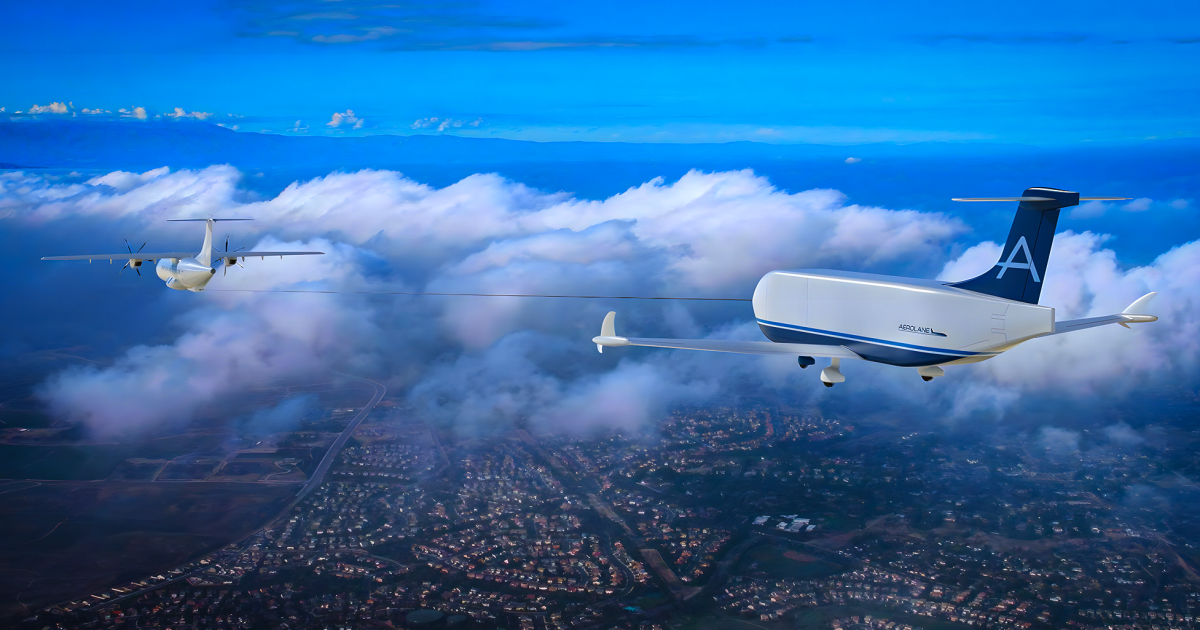I was completely on-board until the word “autonomous”. The gliders need at least a supervising crew if they are to fly anywhere near populated areas.
Don’t worry. The good folks at Boeing have assured us that it is all perfectly safe.
Tragically, all engineers who dissented have taken their lives.
I’d imagine it will be forced into having a pilot and a co-pilot on board. Between not trusting autonomous to be foolproof and imagining that the ALPA union probably demanding it, I can’t imagine they have a choice.
Besides, you think the glider with 10 tons of cargo is going to do well I’m something bad happens to the lead plane? If need be, you’d want a human in that glider to emergency disconnect the tow rope and go land it off in a field or something. It should be able to glide for a very long time. Long enough to talk with ground and set up a good LZ and get emergency services prepped.
I imagine a ground based crew would be available to intervene and fly it remotely. With an option for the powered aircraft crew to fly it remotely through a data link in the cable.
Proper sensory redundancy, appropriate control systems and designing for inherent stability should make this very safe.
The problem with the recent Boeing aircraft is modifying the airframe to take larger quieter engineers caused it to be inherently unstable. This type of aircraft should be designed to be inherently stable. However, redesign is expensive so they avoided that. Instead they added a control system to stabilise the aircraft (perfectly acceptable). The problem is they didn’t add redundancy to the sensors the control system relied on, faulty data caused the aircraft to crash. They also skipped training the pilots on how to override this new control system.
All completely avoidable if everything was done right. They got away with not doing everything right because they successfully corrupted the FDA. Other equivalent bodies assumed the FDA wasn’t corrupt and accepted their qualification of the aircraft.
Remove the corruption and penny punching this concept is completely safe. With corruption all aircrafts are liable to be dangerous.
They got away with not doing everything right because they successfully corrupted the FDA. Other equivalent bodies assumed the FDA wasn’t corrupt and accepted their qualification of the aircraft.
I know you meant the FAA, the Federal Aviation Administration but it’s hilarious to imagine it was all down to a corruption of the onboard food service that caused these 737 MAX crashes, since the food preparation and storage would be regulated by the Food & Drug Administration
FDA
I don’t think the Food and Drug Administration has much influence over commercial aviation.
Intended or not, software bugs are unavoidable. So are mechanical errors, human errors, administrative errors, and regulatory errors. That is why there should always be a human at the end of this stack of Swiss cheese to notice and plug the holes. Aviation didn’t become the safest-by-numbers method of transportation because it was made to be perfect – accidents happened, and the engineers learned from them to make the next iteration safer. Hopefully Boeing’s current bollocking is another such event.
Before the 737 MAX was grounded, there was at least one incident where the MCAS caused the airplane to trim nose-down, and it was a pilot who noticed that the trim wheel was spinning and physically intervened. I’ve consumed most of the Mayday series and several podcasts on the topic – there were many incidents where loss of life was averted by true human ingenuity. That’s why I always want a human operator, even if only to supervise the machine.
Check out black box down if you haven’t, I’ll have to check out mayday
Depending on the region, Mayday might also be called Air Crash Investigations.
Another channel who’s been on the roll lately is Disaster Breakdown. Great video essays with reconstructed footage from a flight simulator. They released an almost two-hour-long video on the 737 MAX just a day ago.
take note urban planners: even in the sky, trains work better
“Aerolane believes it shouldn’t be treated much differently by the FAA than regular ol’ recreational gliders. It remains to be seen how the FAA will feel about this.”
This is an absurd statement as it completely omits the automated part of the towed airplane. Witch is the major point of this project.
And the weight. A recreational glider weighs about 600kg. They want to build one that carries 3 and later 10 tons.
If a recreational glider crashes into a house, it usually does not cause a lot of damage except to the pilot, see here:
https://www.tz.de/welt/niedersachsen-segelflugzeug-stuerzt-wohnhaus-zr-2446316.html
Now make that thing 20times heavier. There is a reason drones are regulated by weight class.
If Boeing passes the bill, why not these guys
The problem is the first part of your question.
Interesting idea, but surely the cost savings are largely pushed forward onto the plane towing all the extra weight?
deleted by creator
A bigger plane falls victim to the square cube law - as it gets bigger the support structures need to get bigger too. At least that’s my hypothesis, clearly the article didn’t mention this. I’m curious if multiple smaller planes allows each plane to be lighter weight relative to the cargo capacity, with the front plane just sporting an engine overspend to its own size/weight.
Cheaper upfront costs. Engines alone are very expensive and require a lot of maintenance. This would increase the capacity for any freight carrier very cheaply.
It would be particularly advantageous for short term increases in freight. People buying gifts at Christmas, natural disasters, medical events like COVID etc.
The alternative would be a second aircraft, that would also need more fuel than a single aircraft.
Don’t forget crew/scheduling, engine management systems, structure for engines/loads, etc.
The idea of dropping off a pod en-route to independently land is nice though
Hey it’s slip coaches all over again!
Real talk, I could see something like this adding some efficiency, but I can’t imagine these trailers landing at a regular commercial airport without a crew and power to abort the landing and circle back when the landing looks to sketch.
Maybe these slip trailers might land at dedicated/specific landing sites where they have the risk tolerance for an unmanned, potentially uncontrolled super-heavy glider landing, but it’s still high risk to anything on the ground on its flight path should the unmanned glider crash
It’s certainly going to use more fuel but presumably less fuel than two separate planes. I really have lots of doubts about towed landings, though.
Obviously their efficiency claims are ‘exaggerated’ as well…
Anyone who has read a single NTSB accident report will understand what an insane idea this is.
Elaborate?
You’re towing a bunch of cargo into the crash site.
Imagine miraculously surviving the plane crash only to get twatted by a crate full of dildos from the cargo vehicle.
Go on… 🥵
Don’t worry, in the event of a malfunction you can just detach the cargo, so now you have two apartment building sized things falling from the sky to completely unpredictable random locations squishing anything they land on top of.
Uh oh, here comes the plane train
i bet landing will find more challenges
Wouldn’t it require the same amount of energy to get airborn / propaget as any other powered aircraft? Because, like, physics…
More recently, the US Air Mobility Command tried flying one C-17 Globemaster III some 3-6,000 ft (900-1800m) back from another, “surfing” the vortices left in the lead plane’s wake – much like ducks flying in formation – and found there were double-digit fuel savings to be gained.
But Texas startup Aerolane says the savings will be much more substantial with purpose-built autonomous cargo gliders connected to the lead plane with a simple tow rope. With no propulsion systems, you save all the weight of engines, motors, fuel or batteries. There’ll be no cabin for a pilot, just space for cargo and the autonomous flight control systems that’ll run them.
It said “cheaper” not “energy efficient”.
Wings are easy, jet engines are hard.
Besides, if you can do it with an electrical locomotive on the ground, the energy conversion to electricity of a power plant should be better than the energy conversion of a jet engine from fuel to movement.
So imo, cheaper seems plausible, energy efficient is a maybe.
Now do boats.
This seems cool as hell. I just hope the FAA agrees. Also, landing one of these things seems like it couldn’t be tough, especially in bad conditions. But who knows
How do they take off? 🤔 Are they towed from the ground too?
These “Aerocarts” will be pulled down the runway by the lead plane just like a recreational glider. They’ll lift off more or less together with the lead plane, then stay on the rope throughout the cruise phase of flight, autonomously surfing the lead plane’s wake for minimal drag and optimal lift
Thanks. Missed that part!
deleted by creator
Good luck landing with this
Edit: unless the glider detaches itself and lands separately








